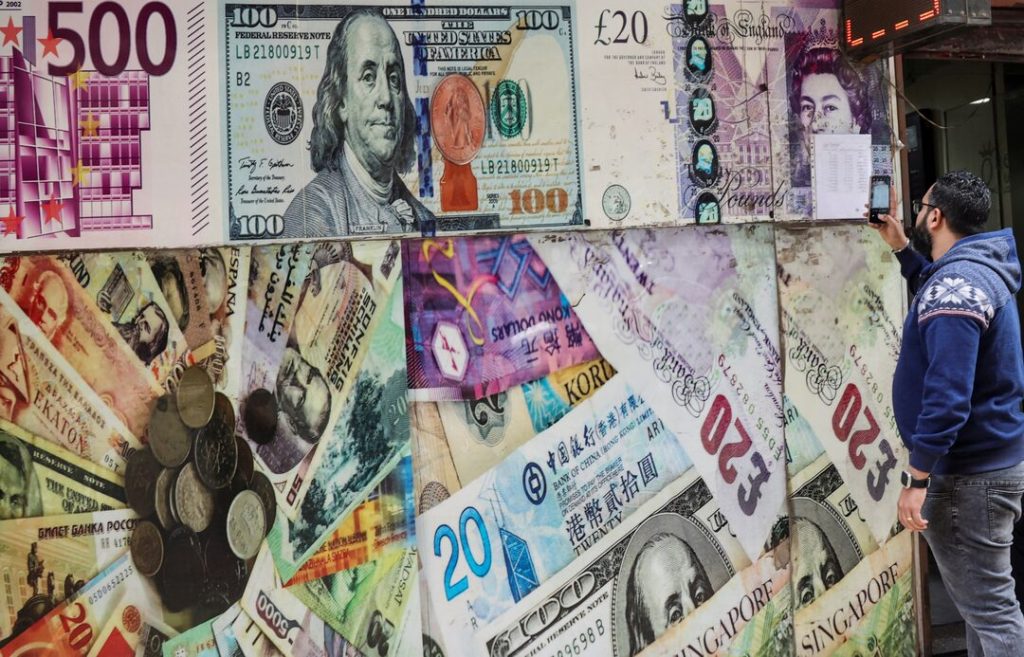Emerging markets (EMs) have long been the subject of global investment interest, attracting capital due to their growth potential, favorable demographics, and resource-rich economies. However, in recent years, these markets have been under considerable pressure, particularly in the context of currency depreciation. As global economic conditions evolve, factors such as interest rate hikes in developed markets, geopolitical tensions, and global inflation have put EM currencies at risk of significant devaluation. The resulting fluctuations in exchange rates and capital flows can have a profound impact on cross-border investments.
In this article, we will examine the reasons behind the growing currency depreciation pressure in emerging markets, the role of global capital flows, and how these factors influence the decisions of multinational investors. We will also explore strategies for both emerging market countries and international investors to navigate the current dynamics and mitigate risks in cross-border investments.
1. The Current Landscape: Currency Depreciation in Emerging Markets
Emerging markets have been facing considerable challenges in recent years, with currency depreciation being one of the most prominent issues. This pressure on EM currencies is a result of multiple global and domestic factors, many of which are interconnected.
1.1 U.S. Federal Reserve’s Interest Rate Hikes and Global Tightening
One of the most significant global factors affecting emerging market currencies is the U.S. Federal Reserve’s (Fed) tightening of monetary policy. As inflation in the U.S. surged to multi-decade highs, the Fed embarked on a series of interest rate hikes to curb price pressures. These rate increases have a direct impact on the global capital landscape, as higher U.S. rates make U.S. assets more attractive to investors, leading to a stronger U.S. dollar and outflows of capital from emerging markets.
- Capital Flight: As U.S. Treasury yields rise, investors often move their capital into dollar-denominated assets, causing capital to flow out of EMs. This phenomenon creates downward pressure on EM currencies, leading to depreciation.
- Dollar-Denominated Debt: Many emerging market governments and corporations hold significant amounts of debt in U.S. dollars. As their local currencies weaken against the dollar, the cost of servicing this debt increases, exacerbating economic pressures and contributing to further currency depreciation.
1.2 Geopolitical Instability and Global Risk Appetite
Geopolitical instability—such as the ongoing Russia-Ukraine war—has also played a role in weakening emerging market currencies. As investors seek safer assets during periods of heightened geopolitical risk, demand for the U.S. dollar, Swiss franc, and gold increases, while emerging market assets, particularly in politically unstable regions, experience capital outflows.
- Risk Aversion: In times of geopolitical uncertainty, investors tend to pull back from riskier assets, which often include EM stocks, bonds, and currencies. For instance, countries with political instability, high inflation, or internal conflict (e.g., Turkey, Argentina, or Venezuela) are more likely to experience currency depreciation and capital flight.
- Trade and Sanctions: Sanctions imposed on countries like Russia and Iran, or even on certain sectors in other emerging economies, can lead to further economic isolation, currency depreciation, and disruption of foreign investment flows.
1.3 Domestic Economic Instability
Emerging markets are often more vulnerable to currency depreciation due to domestic economic instability. Key drivers of instability include high inflation, unsustainable fiscal deficits, political uncertainty, and balance of payments problems.
- Inflation and Debt: Countries with high inflation rates or large fiscal deficits tend to face currency devaluation pressures. High inflation erodes investor confidence, while large fiscal deficits often require the government to print money, further depreciating the currency.
- Trade Imbalances: Many emerging economies rely heavily on exports, particularly commodities. A drop in global commodity prices can lead to trade imbalances, which place downward pressure on their currencies. For example, oil-producing countries like Russia or Brazil are vulnerable to fluctuations in energy prices.
2. The Role of Global Capital Flows
Global capital flows are a crucial element in the story of emerging market currencies. The movement of capital in and out of EMs can either provide economic stability or exacerbate economic volatility. Understanding how these flows interact with currency depreciation pressures is key to comprehending the dynamics of cross-border investments.
2.1 Investment Inflows and Outflows
When emerging markets offer high returns on investments, they attract capital inflows from foreign investors. However, when investors perceive that the risk of investing in a particular market outweighs the potential returns, they withdraw their capital. Several factors influence these flows:
- Monetary Policy in Developed Markets: As mentioned earlier, the Fed’s interest rate hikes have led to outflows from EMs as investors seek higher returns in U.S. assets. Conversely, when developed markets lower interest rates or engage in quantitative easing, capital flows tend to reverse, with more investors looking to capitalize on the higher returns in emerging markets.
- Portfolio Diversification: Many institutional investors, such as pension funds, mutual funds, and hedge funds, allocate a portion of their portfolio to emerging markets. However, in times of global financial instability or rising interest rates in developed countries, these investors may reduce their exposure to EMs to lower their overall portfolio risk, thus accelerating outflows.
2.2 Cross-Border Trade and Investment Patterns
Foreign direct investment (FDI) is another critical form of cross-border capital flow. While FDI generally stabilizes the local economy and supports long-term growth, its volume can fluctuate based on currency depreciation pressures and broader economic conditions.
- FDI and Local Currency Depreciation: When a country’s currency depreciates significantly, foreign investors may hesitate to inject capital into the market, as it becomes more expensive for them to do so. However, for long-term investors, a weaker local currency could present an opportunity to buy assets at a discount, particularly in countries with high growth potential or abundant natural resources.
- Trade Imbalances and Capital Flow: A growing trade imbalance—whether through the import of foreign goods or the export of domestic goods—affects capital flows. Countries with trade deficits may need to attract foreign capital to finance these imbalances, which can sometimes require currency devaluation.
2.3 The Influence of Emerging Market Debt
The increasing reliance of many EMs on external debt, particularly dollar-denominated debt, can worsen the effects of currency depreciation. When a country’s currency weakens, it becomes more expensive for governments and corporations to service debt, creating a vicious cycle of currency devaluation, debt servicing issues, and economic instability.
- Debt Crisis Risk: Countries with a high level of external debt (e.g., Argentina, Turkey, Egypt) are especially vulnerable to shifts in global capital flows. A change in investor sentiment or a global rise in interest rates can trigger capital outflows and a debt crisis, further driving currency depreciation.

3. Cross-Border Investment Strategies: How Investors and Emerging Market Countries Can Adapt
Given the increased volatility and risks associated with currency depreciation in emerging markets, both international investors and EM countries must adapt their strategies to manage potential losses and seize opportunities.
3.1 For International Investors: Hedging and Diversification
- Currency Hedging: To mitigate the risk of currency depreciation, investors can use currency hedging strategies, such as forwards, futures, and options, to protect their portfolios from exchange rate fluctuations.
- Diversified Exposure: Investors should diversify their EM exposure across various countries, sectors, and asset classes to reduce the impact of currency fluctuations on their portfolios. Exposure to EM equities, fixed income, and commodities can provide a buffer against localized currency risks.
- Focus on Stronger Emerging Economies: While many EMs face currency pressures, some have relatively stronger economic fundamentals, such as India, South Korea, and China. Investors may choose to allocate more capital to these markets, which may be better positioned to weather global uncertainties.
3.2 For Emerging Market Countries: Economic and Fiscal Reforms
Emerging market governments must adopt comprehensive economic and fiscal policies to reduce vulnerability to currency depreciation and attract foreign investment. Key strategies include:
- Monetary Policy and Inflation Control: Central banks in EMs should focus on controlling inflation and stabilizing their currencies through prudent monetary policies. Raising interest rates in line with global trends can help attract capital inflows and support the currency.
- Building Foreign Exchange Reserves: Accumulating foreign exchange reserves can provide a buffer during periods of capital flight, allowing countries to stabilize their currencies and avoid excessive depreciation.
- Structural Reforms: Long-term solutions to currency depreciation involve structural reforms aimed at diversifying the economy, reducing reliance on commodity exports, and improving the business environment. Attracting foreign direct investment and fostering innovation are key to strengthening economic resilience.
4. Conclusion: The Complex Interplay of Global Capital Flows and Currency Depreciation
Emerging markets are facing significant challenges due to currency depreciation pressures, driven by factors such as global tightening monetary policies, geopolitical risks, and domestic economic instability. The movement of capital flows—both inflows and outflows—can exacerbate or alleviate the effects of currency devaluation, influencing cross-border investment strategies.
For investors, this environment calls for caution and adaptability, with a focus on diversification, hedging, and investing in stronger emerging economies. On the other hand, emerging market governments must implement sound monetary policies, build foreign exchange reserves, and pursue structural reforms to reduce dependence on external capital and foster sustainable growth.
Ultimately, while emerging markets present significant opportunities, navigating the complexities of currency depreciation and global capital flows requires a nuanced and strategic approach. As geopolitical tensions and economic uncertainty continue to shape the global landscape, both investors and EM countries must remain vigilant and agile to thrive in this ever-changing environment.


















































